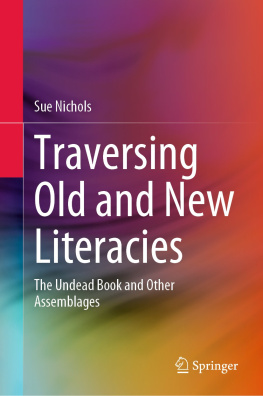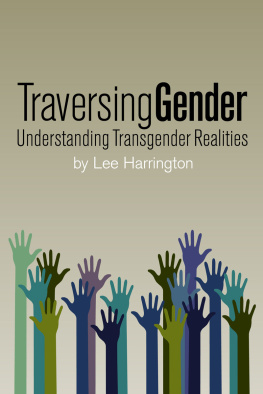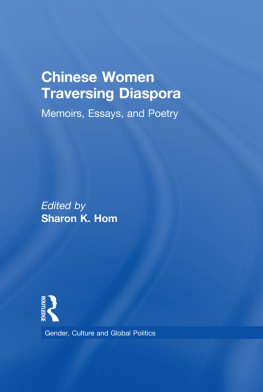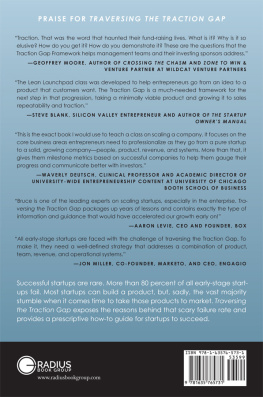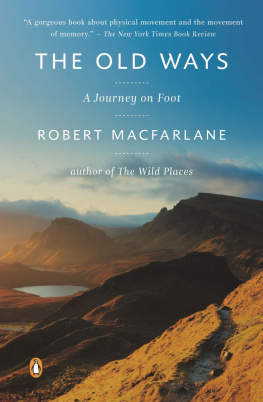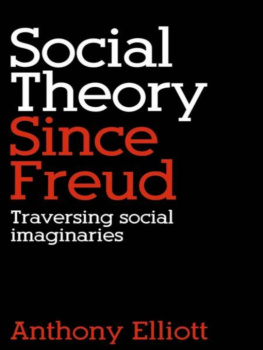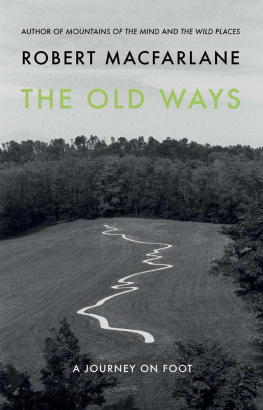Acknowledgments
First and foremost I would like to thank my interlocutors, friends, and relatives in the Czech Republic for opening their doors and sharing their lives with me. I cannot do justice to the many insights they have shared, much less to the generosity of spirit they have shown me and my family, but it has not gone unnoticed. I will not name them here as many of them appear (with pseudonyms) in the pages of this book, but my gratitude to them runs deep. Several colleagues and friends from around the world very generously read the draft manuscript and gave me detailed feedback for which I am extremely grateful. I would especially like to thank Alena Heitlinger, Lloyd Johns, Sarah Pinto, Amy Speier, Julie Spray, Marek Tesar, Jason Throop, and Anja Uhlmann. I am very grateful to my brother, Peter Trnka, who read the manuscript with a philosophers keen eye and engaged in many a debate over Heideggers texts with me. My husband, John Correll, deserves credit for providing feedback on a very early first draft as well as for patiently partaking in years of discussions about Heidegger, Patoka, and the nature of ethnography as the book unfolded. My parents, Nina and Ji Trnka, took a keen interest in this project, reading through sections of the book and sharing their memories of postWorld War II Czechoslovak society.
Thank you also to my dear friend and longtime colleague Christine Dureau, who spent many hours discussing this project with me and gently encouraging it forward. Three other friends made sure I was well supplied with encouragement and enthusiasm during the research and writing processmy warmest thanks to Kerry Gibson and Phyllis Herda in Auckland and Kateina Kkov in Prague. Thanks are due to Tereza Stckelov and Vclav Blohradsk for their thoughtful and generous engagement with this project and to Jana Kopelent Rehak for sharing with me her memories (and those of her family and friends) of ballroom dance classes as well as her thoughts on how Czechs navigate through space. I am also grateful to Ivan Chvatk for showing me around Pragues Patoka Archive.
Courtney Addison, Sharyn Graham Davies, Pauline Herbst, Jesse Hession Grayman, and Sam Taylor-Alexander provided detailed feedback on chapter 3 as part of a Society of Medical Anthropology in Aotearoa (SOMAA) roundtable in Auckland. I would like to thank the editors of Ploughshares for permitting publication of an excerpt from Jaroslav Seiferts poem View from Charles Bridge, the English translation of which was originally published in their journal. Chapter 6 draws from a previous publication (Playing Cowboys and Indians: The Therapeutics of Nostalgia, Canadian Slavonic Papers/Revue canadienne des slavistes 57 [34]: 28498 Canadian Association of Slavists, reprinted by permission of Taylor & Francis Ltd, http://www.tandfonline.com on behalf of Canadian Association of Slavists), and I would like to thank the editor of that volume, Graham H. Roberts, for his encouragement and editorial finesse. Finally, a very hearty thank you to the editorial team at Cornell University Pressand most especially to Jim Lance and Mary Kate Murphyfor so enthusiastically shepherding this book to press.
Introduction
MOVEMENT, TECHNOLOGY, AND CULTURE IN THE MAKING OF (CZECH) LIVES
Look, its Prague! my nine-year-old son Luk exclaimed as he ran up to me carrying his fathers iPad. Google Maps was open to a satellite view of Smchov, the area where we used to live. Its the park and the ice-cream place! Luk said as he pointed excitedly, and then asked, Do you think we can see the Eiffel Tower? referring to the lookout tower in Pragues Petn Park, a smaller-size replica of its Parisian namesake.
I was taken back for a moment to another time and placenot to our many stays in Smchov, but to an evening spent on the other side of Prague, perusing Google Maps with my close friend Lenkas eleven-year-old son Karel. Karel had asked me to show him where I live in New Zealand and Id pulled up a satellite view of Auckland, pointing out some landmarksthe Harbour Bridge, the Sky Tower. But none of it meant anything to Karel, who had never been to New Zealand. We were both getting bored when he asked me, Should we go to Paris? and pulled up a view of the (Parisian) Eiffel Tower.
My son and I could spend hours on Google Maps exploring Prague. Together, we are there, but not there, traversing the spaces we know so well, remembering the pleasures of the Czech capital and anticipating our next visit. There is a sensoriality to this experience, as we feel a thrill when we recognize a building or laugh at the familiar sight of swans on the riverbanks. We feel this because we have felt this city, we have been there before. In contrast, for Karel, satellite images of New Zealand are meaningless, even with a knowledgeable narrator sitting at his elbow. He has no bearings in Auckland and one street melds into the next as we move along them, courtesy of Pegman, Google Maps iconic little yellow man. But while neither Karel nor I had been to Paris at that point, the Parisian Eiffel Tower was something we both recognized. There was already an image of it in our heads, an image that was both confirmed and expanded by our experience of Paris through Google Maps. We were there but not really therereaching out, extending ourselves, trying to grasp a world constituted by layers of fantasy, imagination, and digital surveillance.
There is something about actually being there that Google Maps or any other representative media cannot convey to us. Being there is a matter of embodied sensoriality. It is a matter of getting to know the world through our perceptions, movements, and tactile capabilities. It is necessarily partial and subject dependent; it is our knowledge, conscious as well as unrecognized, of the world as we encounter it.
In my forties, I made my first trip to Paris. Id pictured the Eiffel Tower for many years and even steadied myself to experience a bit of a letdown after seeing so many iconic photographs and cinematic images. Instead, when I got my first glimpse of it in real life, I was startled by its size and command of the city. I had not been there, until I was there.
As many a traveler has recounted, imagining a place is one thing, but experiencing it can be quite another (Brenholdt et al. 2004). This is not to say that we cannot be in virtual environments, for we certainly can have deeply embodied knowledge of virtual spaces, as scholars who study digital culture, particularly gaming and virtual worlds, have shown (Boellstorff [2008] 2015; Doyle 2009). My point here is a simpler one. When we are engaged, even if bodily, with a simulacrum such as Google Maps, this simulacrum may very well be related to the real world and extend our experience of it, but it cannot replace what we gain by being in situ. Google Maps can extend our sense of being there, so that we are there again, or are there seeing more than we had before, taking a turn down a street we never traversed in real life, seeing a moment in time we did not experience. It can also prepare us for what we might expect when we first come there (which is often why we use this application in the first place). But it cannot replace the bodily experience of


